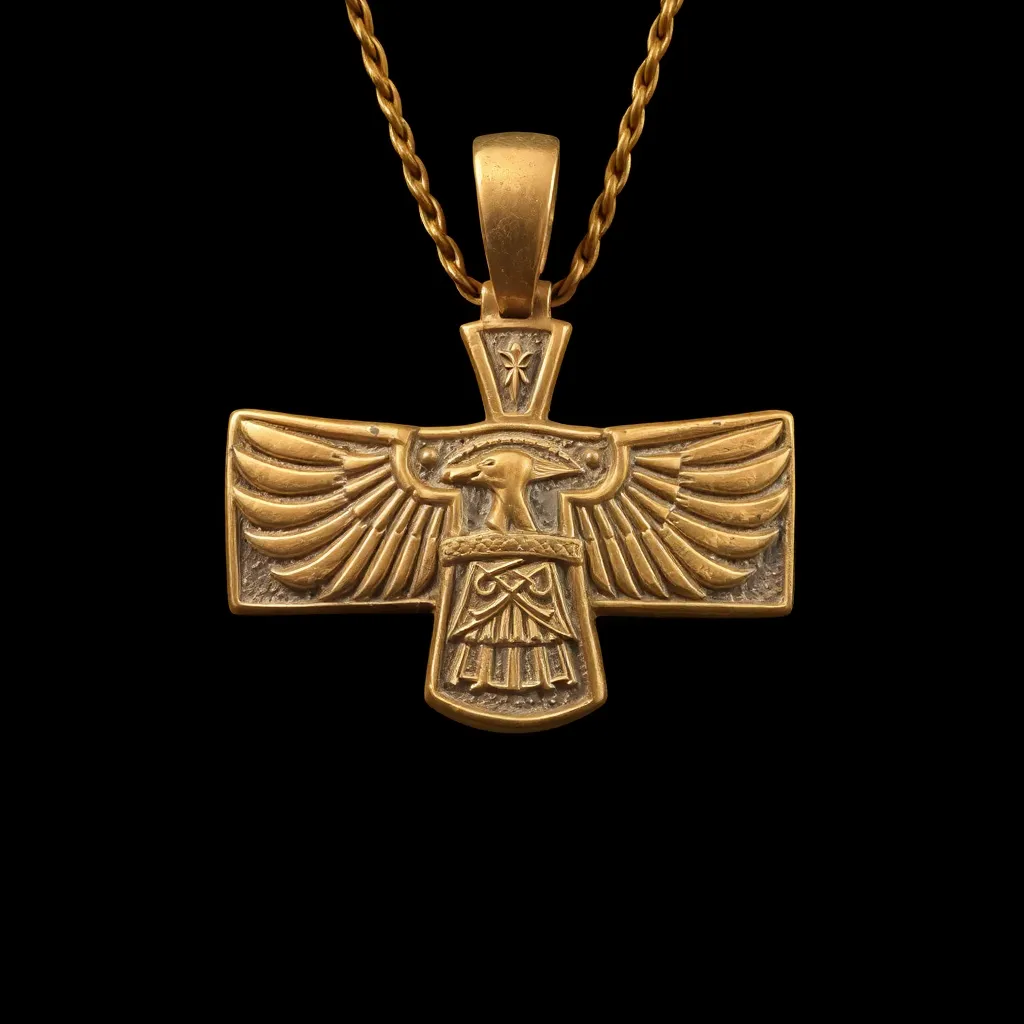The Amulet of Hapi: God of the Nile and Fertility
I. Introduction
Hapi, the ancient Egyptian god of the Nile, is a figure of great importance in Egyptian mythology, embodying the fertility and abundance that the Nile River brought to the land of Egypt. Represented as a man with a large belly, symbolizing prosperity, and often depicted with blue or green skin, Hapi is intrinsically linked to the annual inundation of the Nile, which was vital for agriculture and sustenance in ancient Egypt.
The Nile River was not just a waterway; it was the lifeblood of Egyptian civilization. Its flooding brought rich silt that made the land fertile, allowing crops to flourish. This connection between the Nile and fertility is central to understanding Hapi’s role in Egyptian culture. This article aims to explore Hapi’s historical context, the symbolism of the amulet dedicated to him, and the enduring legacy of his worship in both ancient and modern contexts.
II. Historical Context of Hapi
The origins of Hapi in Egyptian mythology can be traced back to the earliest dynastic periods, where he was revered as a deity responsible for the fertility of the land. Hapi held a unique place in the Egyptian pantheon, often depicted as a benevolent figure who brought forth the life-giving waters of the Nile.
Hapi’s role extended beyond mere agriculture; he was also a protector of the dead, ensuring their passage to the afterlife by providing nourishment in the form of the fertile land. The cultural reverence for the Nile River is evident in various texts and monuments, where Hapi is celebrated as a god who embodies the essential relationship between the Egyptians and their environment.
III. Symbolism of the Amulet of Hapi
The amulet of Hapi is often crafted from materials such as turquoise, lapis lazuli, or faience, symbolizing the waters of the Nile. Its design typically features representations of Hapi, emphasizing his large belly and the symbols of fertility, like the plump granaries and crops.
Symbolically, Hapi represents not only fertility and abundance but also the duality of the Nile’s life-giving and destructive powers. The amulet serves as a talisman for protection and prosperity, connecting the wearer to Hapi’s blessings.
The connection between the amulet and fertility is profound, as it was believed to invoke Hapi’s favor, ensuring a bountiful harvest and the continuation of life.
IV. The Importance of the Nile in Egyptian Life
The Nile River was crucial for the sustenance of Egyptian life. It provided water for drinking, irrigation for crops, and served as a transportation route for trade and communication. The annual flooding of the Nile, known as the Inundation, was a significant event that directly impacted agriculture.
- The flooding brought nutrient-rich silt that revitalized the soil.
- Crops such as wheat and barley thrived, supporting the population.
- Fish and wildlife flourished in the wetlands created by the flood.
Hapi’s role was essential in ensuring the Nile’s bounty; he was often depicted in art and literature as the very essence of the river’s life-giving properties. His blessings were sought to guarantee the fertility of the land and the prosperity of the people.
V. Hapi in Rituals and Worship
The worship of Hapi included various festivals and ceremonies, particularly during the flooding season. The Festival of Hapi celebrated the inundation, where offerings were made to ensure continued blessings of fertility and abundance.
Offerings often included:
- Food items such as bread, beer, and fruits.
- Flowers and incense to please the deity.
- Symbolic representations of crops and livestock.
The amulet of Hapi held a significant place in these religious practices, worn by individuals seeking protection and prosperity. It was believed that wearing the amulet during rituals would strengthen the connection between the worshiper and Hapi, ensuring divine favor.
VI. Archaeological Discoveries and Artifacts
Numerous archaeological discoveries have shed light on Hapi’s importance in ancient Egyptian society. Artifacts such as statuettes, inscriptions, and amulets dedicated to Hapi have been found in tombs and temples, illustrating the reverence for this deity.
These findings provide insight into the beliefs and practices surrounding Hapi, highlighting his role in daily life and the afterlife. The interpretation of these artifacts often reveals a deeper understanding of how Hapi influenced art and iconography in ancient Egypt, with his image appearing alongside other deities in various artistic forms.
VII. Modern Interpretations and Cultural Legacy
Hapi’s influence extends beyond ancient Egypt, as his imagery and symbolism continue to resonate in contemporary culture. Modern fertility symbols often draw inspiration from ancient representations of Hapi, reflecting the enduring connection between fertility, water, and life.
The amulet of Hapi has found relevance in modern spirituality, where it is used as a symbol of abundance and protection. Many people today wear replicas of the amulet, invoking Hapi’s blessings in their lives.
Hapi also appears in popular culture and literature, often symbolizing fertility and the nurturing aspects of nature. His legacy is a testament to the deep-rooted connection between humanity and the natural world.
VIII. Conclusion
In summary, Hapi’s significance in ancient Egyptian mythology is profound, as he embodies the vital relationship between the Nile and fertility. The amulet dedicated to Hapi symbolizes this connection, serving as a protective talisman and a reminder of the abundance that the Nile provided.
The enduring legacy of Hapi and the Nile is a reflection of the cultural and historical impact of ancient Egyptian beliefs. As we explore these ancient practices and symbols, we gain a deeper appreciation for the complexity of human relationships with nature and the divine.
Through understanding Hapi and the significance of his amulet, we are reminded of the importance of honoring the forces of nature that sustain life.




